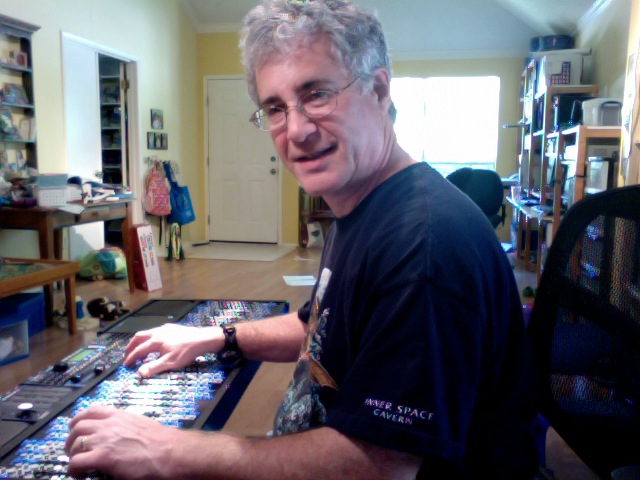



January 13, 2012

I've said many times, that one of the great things about this business is coming into contact with so many interesting people all over the world. Back in 2009, I was contacted by Mark L. Vines, of Austin, Texas. Mark began by asking me about the Tonal Plexus, and how well it works with tunings other than its default master tuning of 205ET. This began a lengthy correspondence which continued through 2010, during which time we discussed tuning and alternate keyboard layouts, and the advantages and disadvantages inherent in different approaches to keyboard design. At one point, Mark sent me his own designs for a custom keyboard suitable for 113edo.
I tried to convince Mark that building a custom keyboard would be much more expensive and in the end not really necessary since the Tonal Plexus is already here and could do what he wanted. At the time, Mark wanted to realize many different divisions of the octave on a single keyboard. He eventually ordered a TPX6s, which I built and delivered to him in September 2010, almost a year after Mark first contacted me.
Since then, Mark has been an enthusiastic supporter of the Tonal Plexus, and has contributed to the development of TPXE software by reporting problems and requesting features.
Recently, I asked Mark if he'd like to share something about his experience with the keyboard for the blog. Here's what he wrote in response. Thanks, Mark!
"Playing the Tonal Plexus has drastically changed what I want and expect from it. Even though retuning is literally as easy as pushing a button, the Master Tuning is the only one I enjoy playing on the Plexus. So, whereas I originally intended to change tunings with great frequency, now I never stray from 205ed2. The energy and time, time, time I thought I would put into alternative tunings, I now put instead into learning the various regular temperaments that 205ed2 embraces, and programming the shapes editor to help me learn the chordal possibilities in the different key signatures of those temperaments. If my experience is any guide, once you own a Tonal Plexus, the sooner you decide to explore the Master Tuning, the happier you'll be. Benefits include a whole gallery of Moment of Symmetry scales, especially the schismatic temperament called Garibaldi. The wide, bowl-topped center keys make playing in Garibaldi feel most natural, as if the Plexus wants you to play that way. Gary Wright's "Love Is Alive" and "Lay My Love" by Cale and Eno are the first tunes I played on the Plexus in Garibaldi, and I'm still improvising variations on them. Treat the higher of the two black center keys between G and A as your home key signature. The higher black center keys and all the white center keys together spell Garibaldi[12]. Then add the lower black center keys and you have Garibaldi[17]. The learning path from from Garibaldi[12] through Garibaldi[17] to Garibaldi[29] will allow you to vary common-practice musical works in a way that integrates higher harmonics into them while helping you navigate the keyboard more fluently. Resisting the Master Tuning just doesn't pay. Resisting Garibaldi doesn't pay. Go with the flow and it will reward you. As your mind and fingers get comfortable with Garibaldi[29], you'll be better qualified to explore the other temperaments available, first among the bowl-topped keys that play 41ed2, then using the entire keyset that plays 205ed2. When that starts to feel like swimming upstream, return to Garibaldi for awhile. That, in my opinion, is the most joyful course for the Plexus player. When tempted to retune, ask yourself this: What tuning can give you Garibaldi, Porcupine, Bohlen-Pierce, Quanic, Miracle, Magic and Meantone all in an easy, intuitive key layout that's friendly to your common practice favorites? Stick with 205!" — Mark L. Vines, January 2012[ Showing 1 entry | Previous entry | Next entry | Show all entries ]